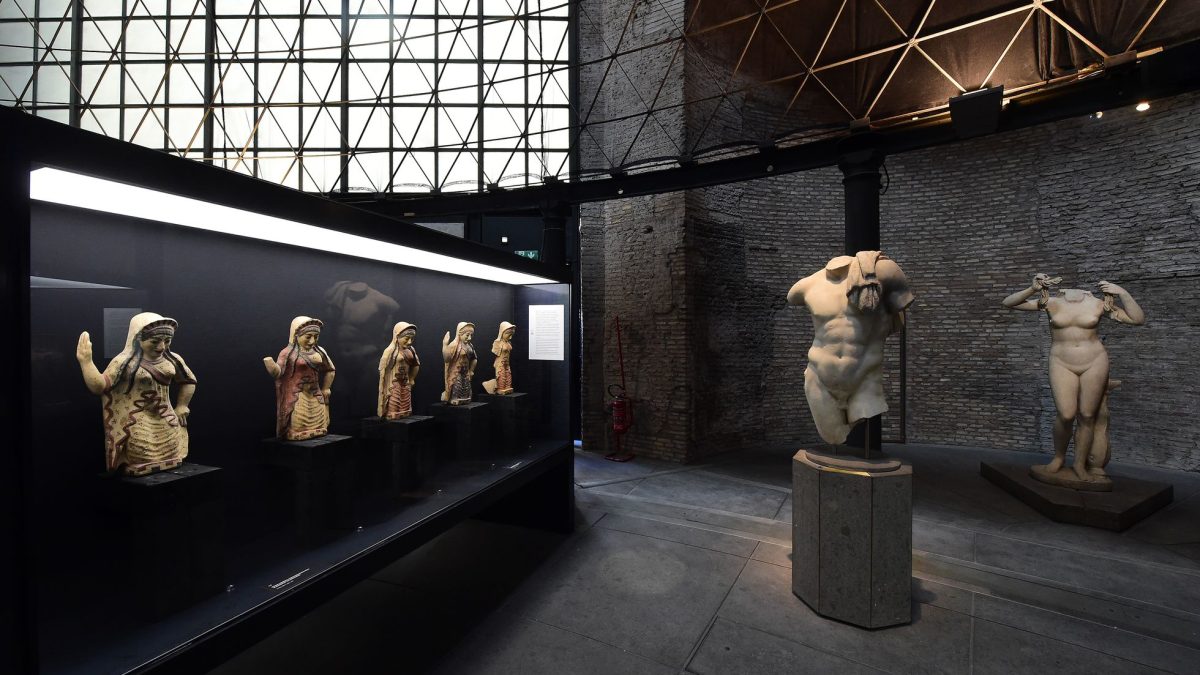
El Museo Nacional de Roma ha inaugurado un espacio llamado “Museo de Arte Salvado”, donde se exponen piezas que han sido víctimas de robo, tráfico ilegal o dañadas en guerras y desastres naturales.
La historia de Italia y su conjunto artístico han sido privados, en numerosas ocasiones, de piezas que configuran una parte importante de su cultura. Stéphane Verger, director del Museo Nazionale Romano afirma que cuando aparecen objetos sustraídos, no se conoce la procedencia, pero normalmente son atribuidos a las regiones de Etruria o la Magna Grecia. Uno de los ejemplos de los objetos recuperados es un cráter ceremonial de terracota del siglo VII a.C, pintado en blanco con pájaros acuáticos. Los investigadores relacionaron este tipo de pieza con la típica de un lugar antiguo de Lazio. En estos trabajos de investigación, se pudieron encontrar tumbas destruidas y expoliadas que, en colaboración con la Fiscalía Italiana, se han podido rescatar objetos que provienen de estas excavaciones clandestinas que datan del siglo VIII a.C y el siglo III d.C.
Los Carabinieri son el cuerpo encargado de la Protección del Patrimonio Cultural y han intervenido 1.3 millones de obras falsificadas gracias a la ayuda de investigadores como historiadores del arte y restauradores. Gran parte de estas obras han sido repatriadas de Estados Unidos, especialmente de colecciones de museos, coleccionistas privados, casas de subastas y galerías de antigüedades. Suelen ser objetos etruscos, de origen griego o restos romanos.
Todos los objetos conseguidos y recuperados permanecen en este museo antes de ser devueltos de nuevo a sus lugares de origen. De esta manera, durante la estancia en este espacio, las piezas cuentan a los visitantes del museo, no sólo la historia de su origen, sino también, las vicisitudes vividas con la finalidad de concienciar a la población del peligro de prácticas ilícitas como el tráfico de arte. Esta iniciativa pretende, por tanto, acercar a la gente de una manera real, directa y particular, que el patrimonio cultural común debe descansar donde su historia vaya a ser respetada, escuchada y valorada desde un compromiso moral.
__
ITALIAN MUSEUM OF RESCUED ART
The National Museum of Rome has inaugurated a space called "Museum of Saved Art", where pieces that have been victims of theft, illegal trafficking or damaged in wars and natural disasters are exhibited.
The history of Italy and its artistic ensemble have been deprived, on numerous occasions, of pieces that make up an important part of its culture. Stéphane Verger, director of the Museo Nazionale Romano says that when stolen objects appear, the provenance is unknown, but they are usually attributed to the regions of Etruria or Magna Graecia. One of the examples of the recovered objects is a 7th century BC terracotta ceremonial crater, painted in white with aquatic birds. The researchers related this type of piece to that typical of an ancient site in Lazio. In these research works, it was possible to find destroyed and plundered tombs that, in collaboration with the Italian Prosecutor's Office, it has been possible to rescue objects coming from these clandestine excavations dating back to the 8th century BC and the 3rd century AD.
The Carabinieri are the body in charge of the Protection of Cultural Heritage and have seized 1.3 million forged works thanks to the help of researchers such as art historians and restorers. Many of these works have been repatriated from the United States, especially from museum collections, private collectors, auction houses and antique galleries. They are usually Etruscan objects, of Greek origin or Roman remains.
All the objects obtained and recovered remain in this museum before being returned to their places of origin. In this way, during their stay in this space, the pieces tell museum visitors not only the story of their origin, but also the vicissitudes experienced, with the aim of raising public awareness of the danger of illicit practices such as art trafficking. This initiative aims, therefore, to bring people closer in a real, direct and particular way, that the common cultural heritage must rest where its history will be respected, listened to and valued from a moral commitment.
__
